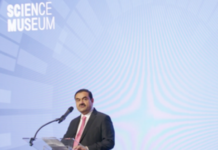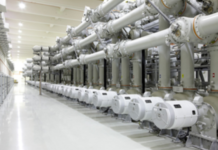New Delhi– It’s not reasonable to link GST with the slowdown in the manufacturing output as the sector is facing problems which go beyond the tax reform, says NITI Aayog Member Bibek Debroy.
“Why should GST have any impact on manufacturing? The only answer I can think of is that there were some things where there was a lack of clarity in rules and some instances where it was not clear what the GST rate was,” Debroy told IANS in an interview.
“These are very transitory things which we don’t need to worry about because it is a blip that will go away once the transition is complete,” he maintained.
“I don’t think the problem with manufacturing is these transitory things.”
The Nikkei India Manufacturing Purchasing Managers’ Index (PMI), which is a composite indicator of manufacturing performance, on Tuesday showed that India’s manufacturing sector’s output declined last month due to the launch of the Goods and Services Tax (GST) on July 1.
It stood at 47.9 in July — its lowest since February 2009 — compared to 50.9 in June 2017.
An index reading of above 50 indicates an overall increase in economic activity — and below 50, an overall decrease.
Asked whether some serious problems were ailing the manufacturing sector, Debroy said: “I agree. That, I am not disputing.”
“About manufacturing, there is a long list of problems that are ailing the sector like physical infrastructure, including power and transport, procedures, tax issues — direct as well indirect — and credit-related issues,” he aded.
The NITI Aayog Member said that these problems were not new and had been ailing the sector for a long time.
He said the current government had taken several significant measures to improve the sector’s performance but it would take some time for them to bear results.
“None of them will solve things in six months. Most of what this government has done on manufacturing is what economists would call supply side measures. So it takes time. There is no instant fix,” Debroy explained.
According to the Central Statistics Office (CSO), India’s growth saw a slowdown in 2016-17, especially in the last quarter when the GDP growth was estimated to be 6.1 per cent, a dip attributed to the demonetisation exercise and a manufacturing slowdown.
Debroy dismissed the link and said: “Just because three things happen at the same time doesn’t mean that they are linked with each other.”
“GDP is determined by so many different things. To ascribe it to GST or demonetisation is completely unrealistic,” he said, adding that now we don’t have GDP but GVA (Gross Value Added).
Indirect taxes are added while subsidies are subtracted from GVA to arrive at the GDP figure.
Debroy said the CSO estimation is essentially based on the organised sector on the basis of which it does an estimate — “which is more like guesswork” — for the unorganised sector.
“This is fine if whatever trend is happening in the organised sector is similar to the trend that is happening in the unorganised sector. But if the trends are different, then it is a terrible mistake.
Debroy said that historically, the unorganised sector has grown in tandem with the organised sector, particularly during the high-growth years.
“So the question to which I don’t think anyone has a satisfactory answer is — has that link has broken down?
“So if demonetisation has hurt the unorganised sector more, then I have a problem with the CSO numbers. And if it has hurt the organised sector more, then I have a problem with the GVA numbers,” he said.
The noted economist said the second “serious issue” which he feels uncomfortable about is the deflator — a measure of the level of prices of all new, domestically produced, final goods and services in an economy.
Debroy explained that what we have is a nominal GVA figure on which a deflator is used to arrive at the real figure, which takes inflation into account.
“What is continuously reported is the real figure, which is a derived figure,” Debroy said.
According to the government data, while the real growth figures have shown a declining trend, the nominal GVA growth rate has increased from 8.7 per cent in first quarter of 2016-17 to 11.3 per cent in the fourth quarter.
The reason has been the GVA deflator which increased to 5.4 per cent in the fourth quarter of 2016-17 compared to 1.6 per cent the previous year.
“Therefore, while I am confident about 11.5 (nominal figure), I am uncomfortable about the real one,” Debroy said. (IANS)






